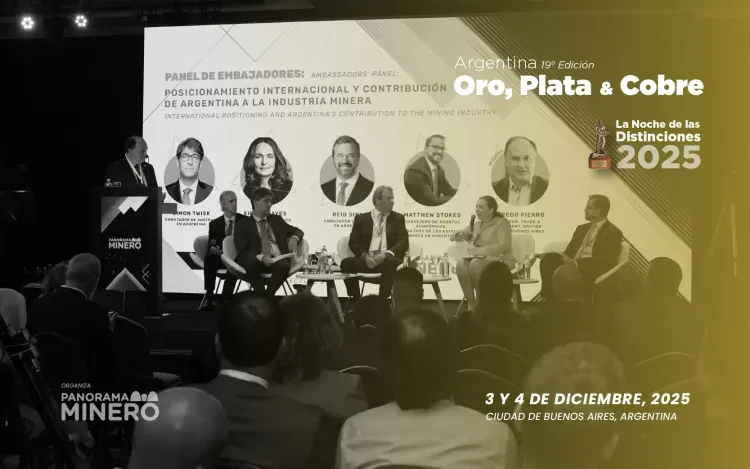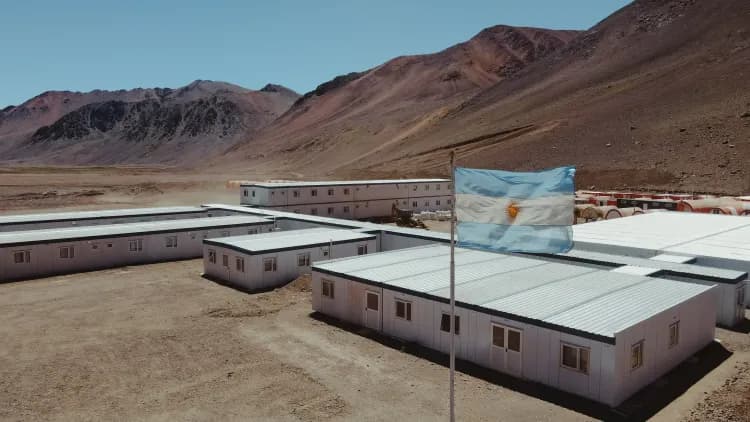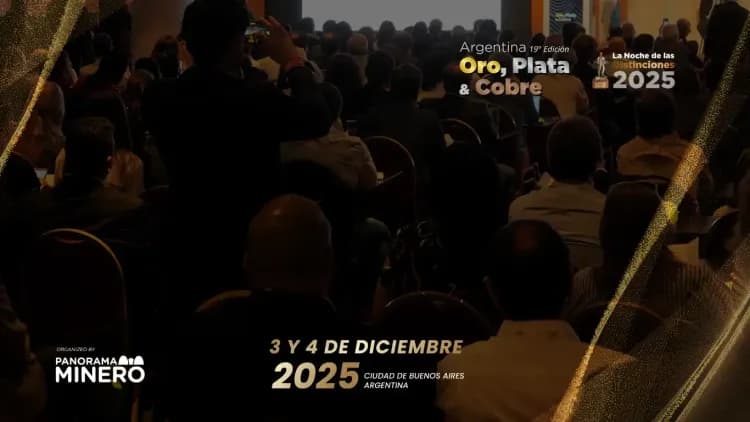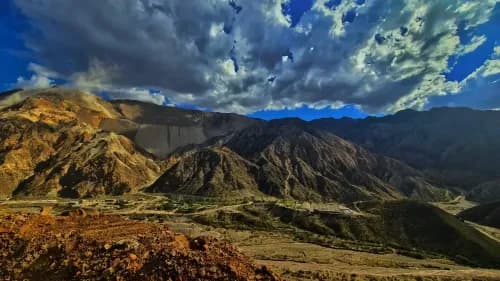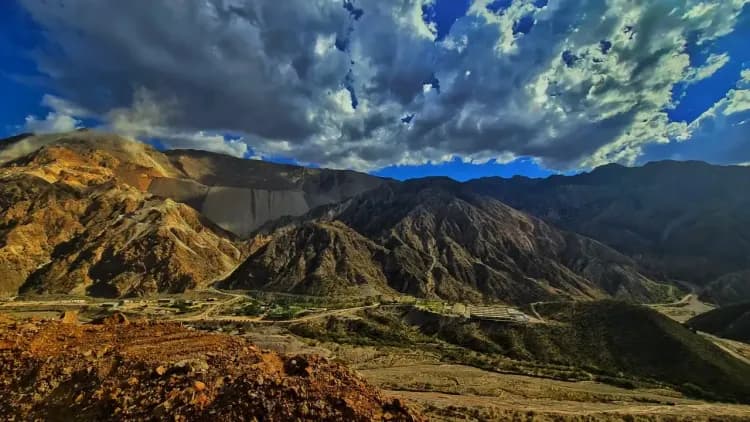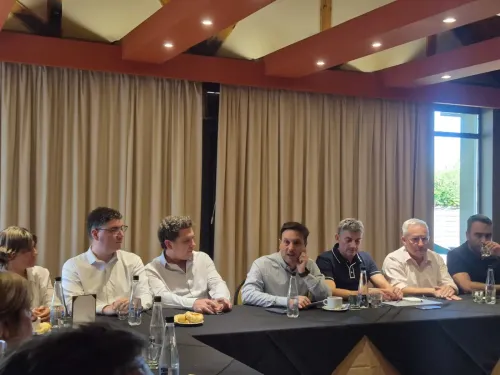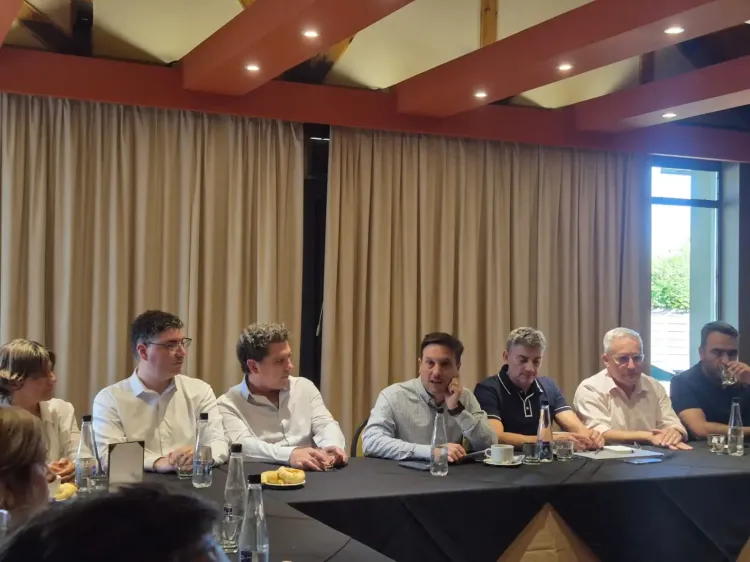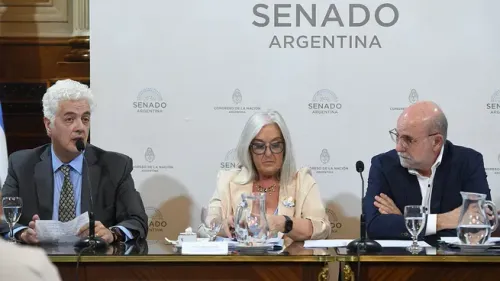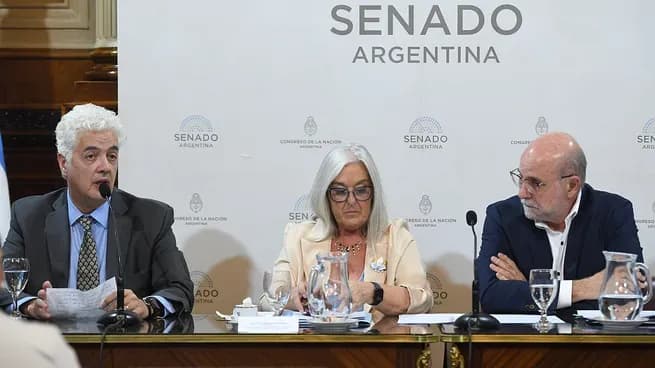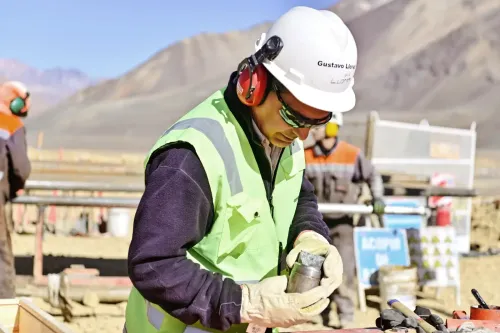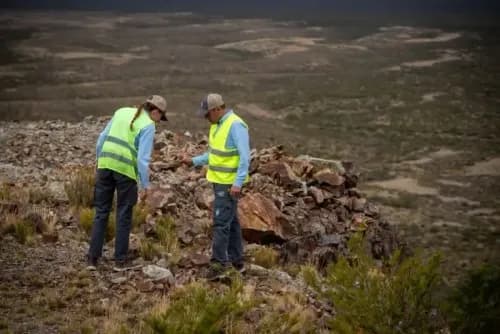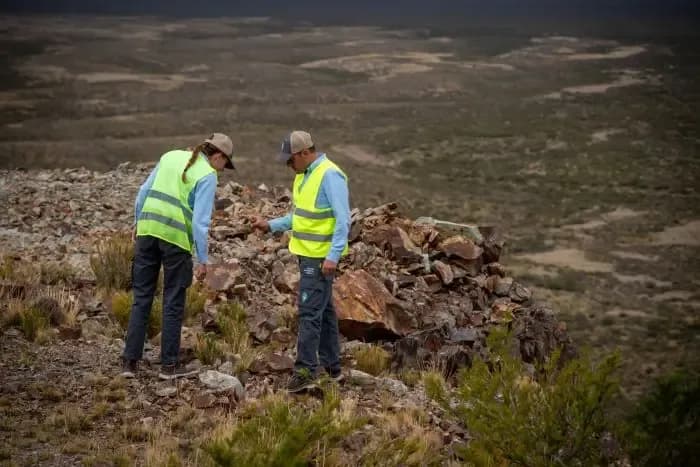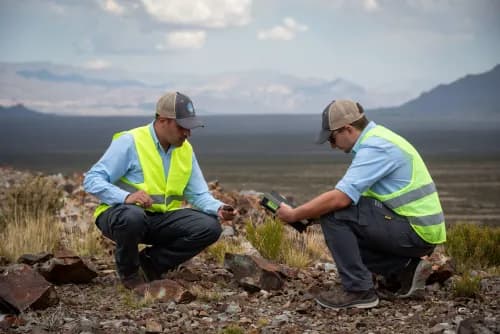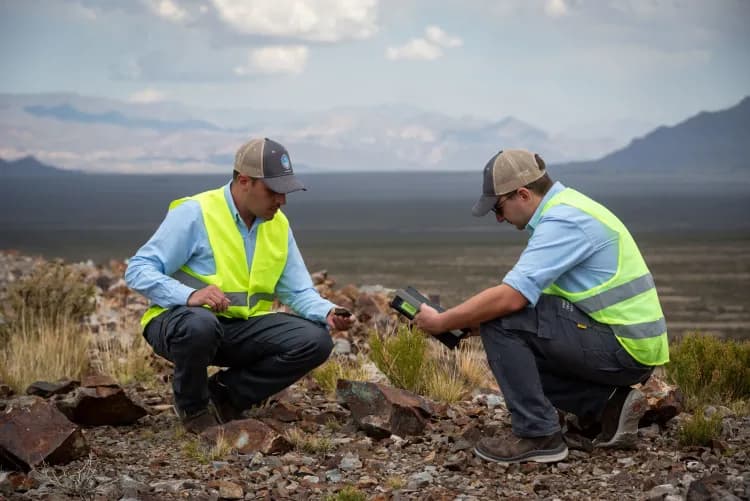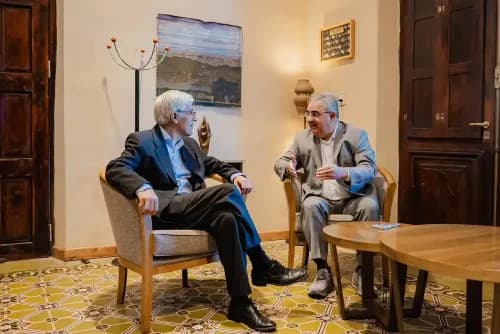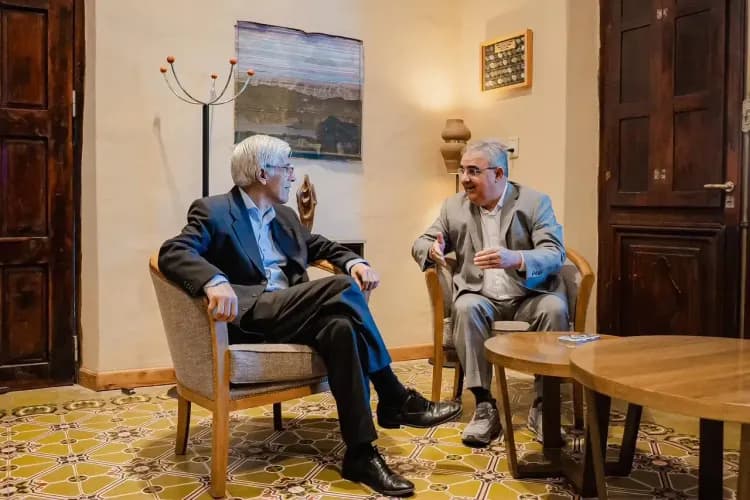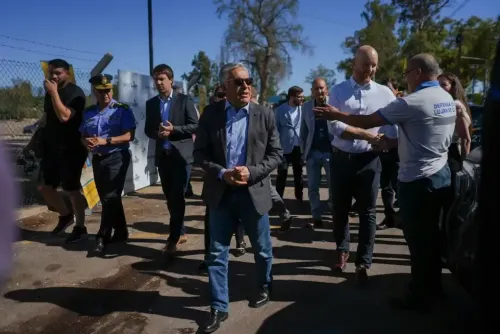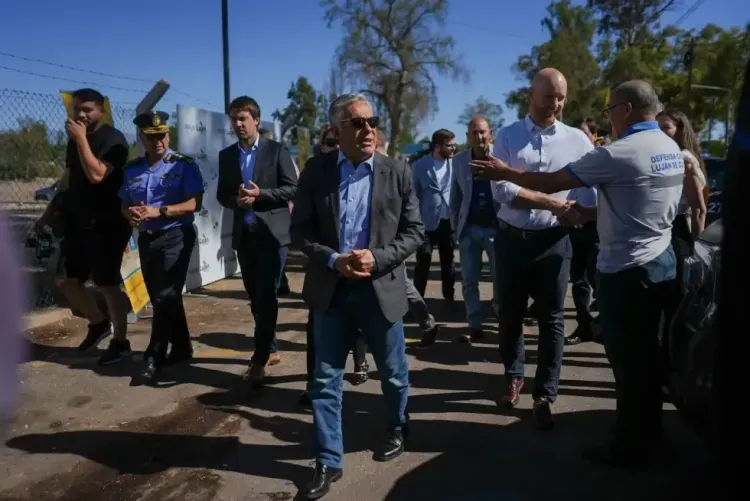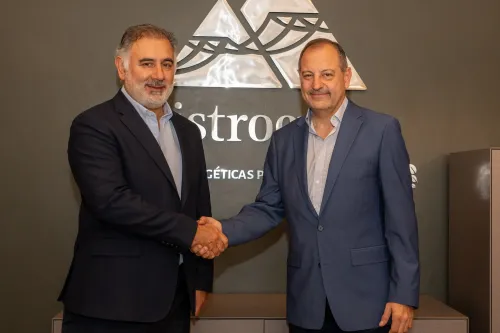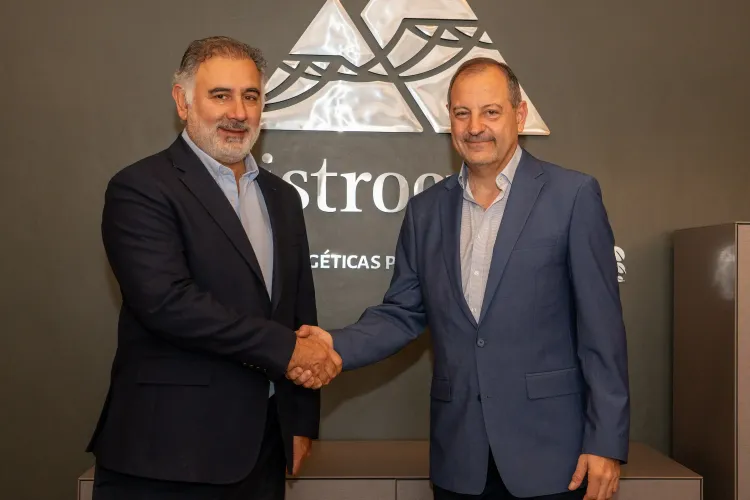McEwen Mining Inc. announced the results of a new Preliminary Economic Assessment (PEA) on its 100% owned Los Azules Copper Project, located in San Juan province. The results of the 2017 PEA demonstrate that Los Azules is a robust, high margin, rapid pay-back, and long-life open pit mine at current copper, gold and silver prices.
“Los Azules is a giant porphyry copper deposit that offers tremendous potential to generate wealth for McEwen Mining shareowners and other stakeholders,” said Rob McEwen, Chairman and Chief Owner. “Our next steps are to advance permitting and prefeasibility/feasibility studies to move Los Azules towards production. The reforms introduced by the government of Argentina under the leadership of President Macri to encourage mining investment by eliminating taxes on exported mineral concentrates was a key factor driving the new PEA for Los Azules”.
The 2017 PEA is a substantial revision of the previous 2013 PEA and contemplates an enhanced implementation strategy resulting in improved economics while reducing execution risk. It envisions an owner-operated mine and conventional concentrator (flotation circuit) producing a copper concentrate for export. A phased implementation approach is employed to optimise initial capital expenditure. Phase 1 implementation will have a daily throughput of 80,000 tonnes per day (tpd), and Phase 2 will deliver a 50% increase in the processing rate to 120,000 tpd. The process design has been modeled on the flowsheet and implementation of the recently constructed and operating Antapaccay (Glencore) copper concentrator located in the high Andes of Peru. Antapaccay shares many key characteristics with Los Azules, making it an obvious choice upon which to model the proposed infrastructure. Average annual copper production for the first 10 years would be in the order of 415 Million lbs.
Using the assumptions of $3.00/lb copper, $1,300/oz gold, and $17/oz silver, the Los Azules project generates a robust after-tax Net Present Value (NPV) discounted at 8% of $2.2 billion and an Internal Rate of Return (IRR) of 20.1%. The project economics for Los Azules contemplates two years of permitting, drilling, and feasibility studies; followed by a three year project implementation phase for production of the first copper concentrates. The economic values presented in the 2017 PEA are after-tax financial outcomes at the point of commencing the project implementation phase. The key financial results are summarized in Table 1
| After-tax Financial Results
|
||
| Parameter | Unit | 2017 PEA Result
|
| Initial CAPEX | $ millions | 2,363
|
| Phase 2 CAPEX | $ millions | 278
|
| NPV8% | $ millions | 2,239 |
| IRR | % | 20.1
|
| Payback Period | Years | 3.6
|
| C1 Costs (first 10 years) | $/lb. | 1.11
|
| C1 Costs (Life-of-mine) | $/lb. | 1.28 |
C1 cash costs include at-mine cash operating costs, treatment and refining charges, mine reclamation and closure costs, and copper concentrate transportation.
Table 1 – Key Economic Parameters
The life-of-mine (LOM) ore tonnage is estimated to be 1,488 million tonnes of concentrator feed and 1,510 million tonnes of waste stripping. The stripping ratio, including stockpile re-handling, is projected at 1.05 (tonnes of waste per tonne of sulfide ore milled). Excluding the three-year preproduction period, the mine life is estimated at 36 years.
The concentrator feed during the first five years of operation is predicted to have a higher average grade of 0.73% copper. These grades are approximately double the average grades in the later years of mining (after Year 20). In the first five years of mining, 93% of this initial mill feed is presently classified as Indicated mineralized material and the remaining 7% is Inferred mineralized material.
Processing
Preliminary metallurgical test work has been conducted intermittently since 2008 to determine how the mineralized material responds to flotation as a means of recovering payable copper metal. Results have consistently proved favorable and flotation has been adopted as the processing option of choice.
The Los Azules concentrator will produce copper concentrate as a final product. The process flowsheet has been modeled on the Antapaccay copper concentrator (Glencore – Peru) due to similarities in ore properties and process plant altitudes. Some minor design changes, in equipment sizing only, have been incorporated based on operating experience at Antapaccay. The plant has been designed for average daily throughput of 80,000 tpd. The concentrator would be constructed on-site and would employ one comminution circuit consisting of a primary crusher, stockpile feed conveyor, reclaim conveyor, one SAG mill, two pebble crushers and two ball mills. The comminution circuit would be followed by flotation, thickening and filtration circuits, a Tailings Storage Facility (TSF) and concentrate storage. LOM recovery of copper to concentrate is expected to be 91% at a concentrate grade of 30% Cu.
It is planned to expand the capacity of the plant to 120,000 tpd by Year 5 through the installation of additional comminution and flotation capacity. Gold and silver are recoverable to the copper concentrate. No other metals have been identified that would yield by-product credits, nor that have significant amounts of penalty elements.
Capital Costs
A key desired outcome of this study was to provide a project capital estimate with a reasonable level of accuracy. A summary of the initial capital estimate is provided in Table 2.
| Capital Cost Estimate | |
| Area | CAPEX
($ Millions)
|
| Mining Equipment | $ 215 |
| Mine Pre-stripping Cost | $ 193 |
| Surface Scope (Concentrator, Power Line, Tailings, etc.) | $ 979
|
| Total Direct Cost | $ 1,387 |
| Total Indirect Costs | $ 508 |
| Contingency | $ 420 |
| Owner’s Cost | $ 48 |
| Total Initial Capital Cost | $ 2,363 |
Table 2 – Capital Cost Estimate
